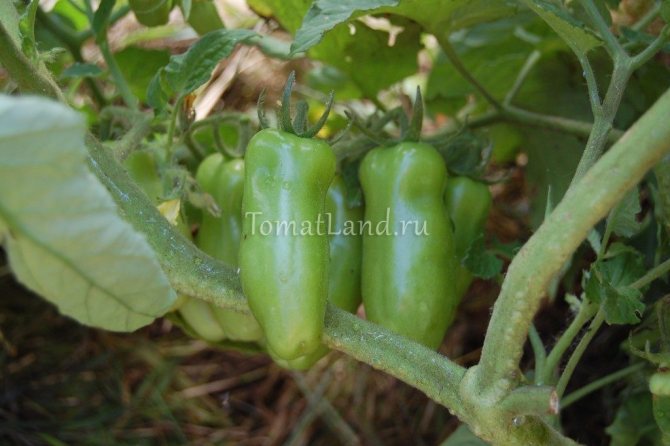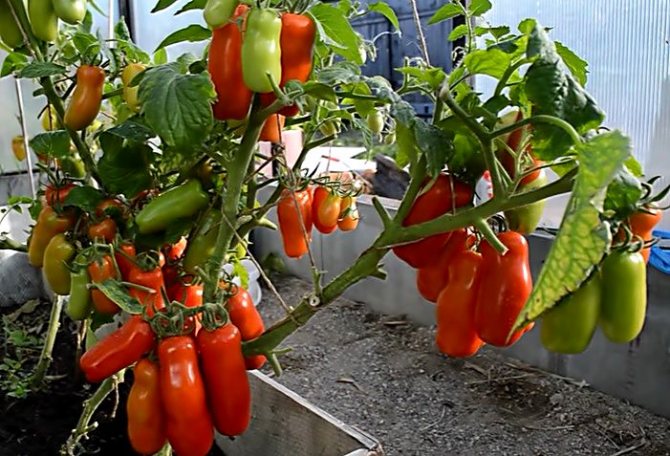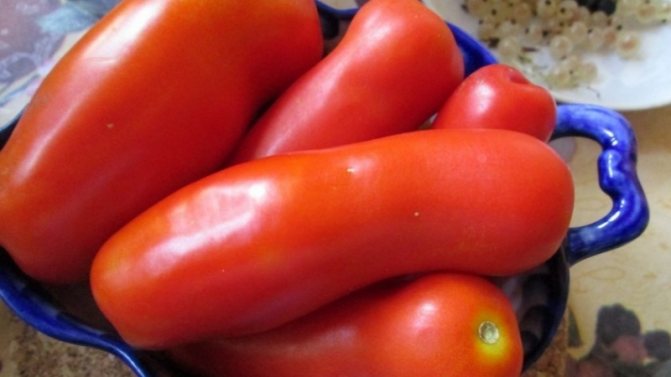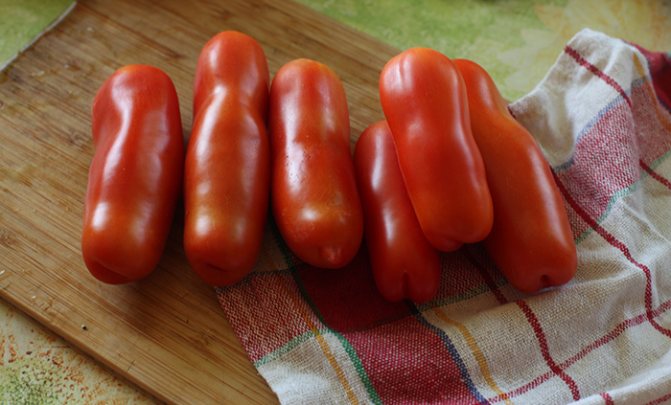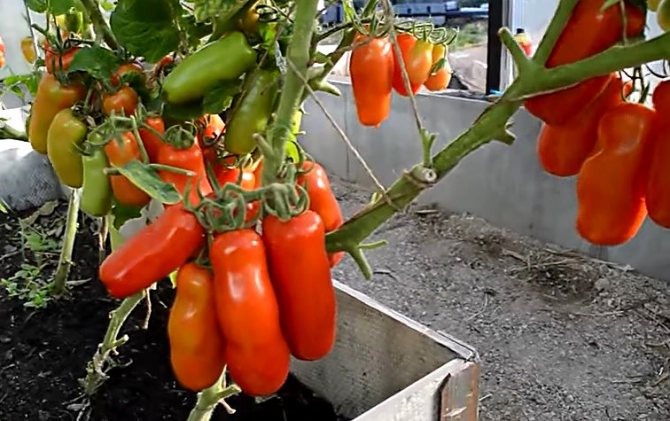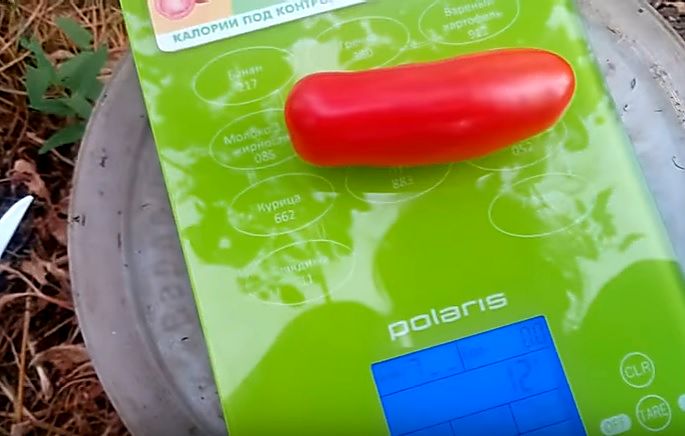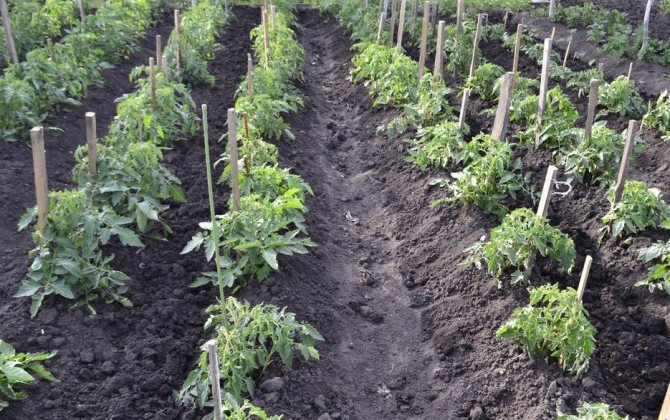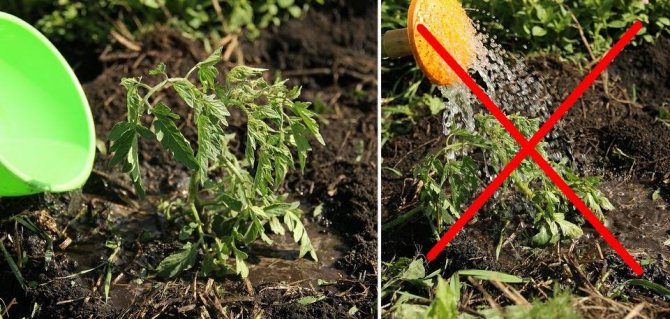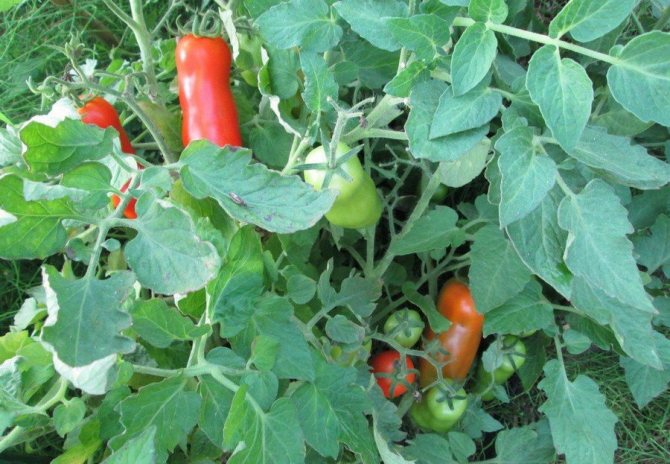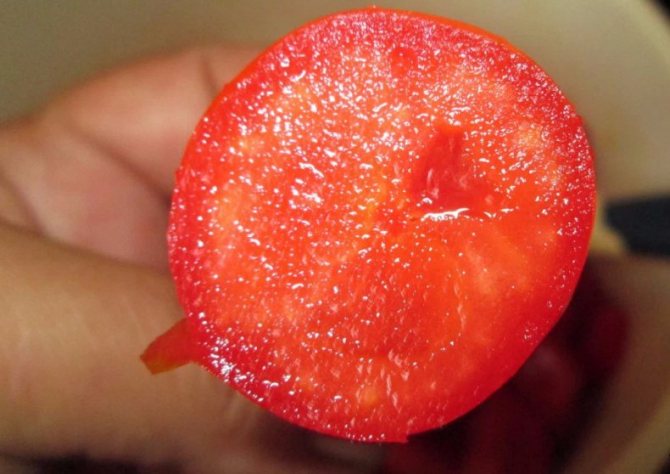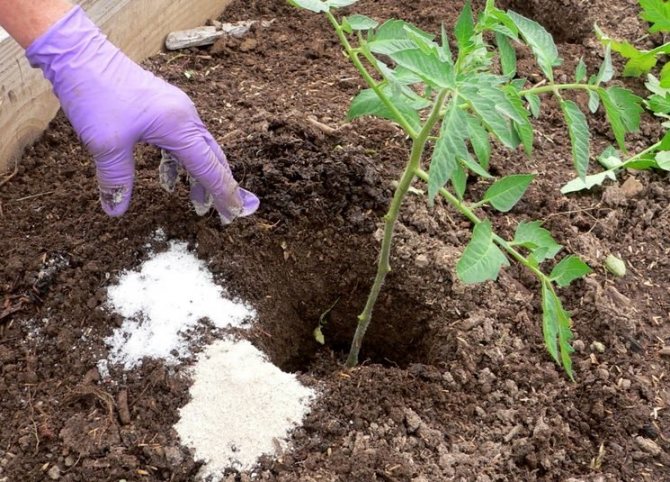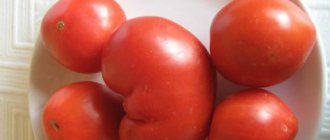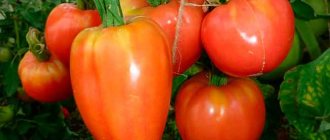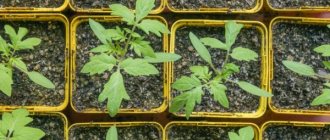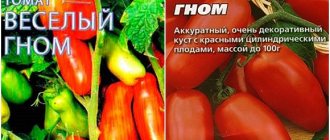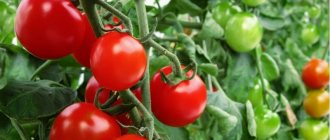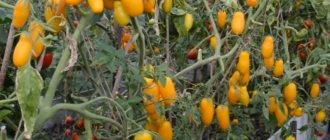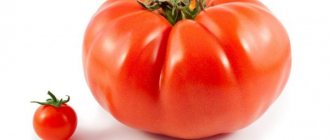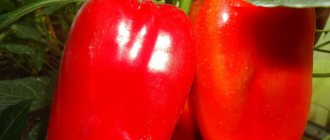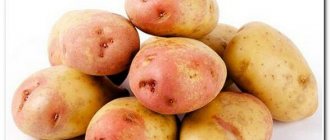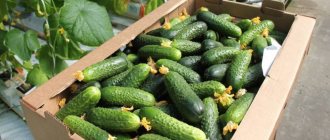»Vegetable growing» Tomatoes »Tomato variety Zhigalo
0
246
Article rating
The Zhigalo tomato is distinguished by its original form of fruits - they resemble sausages or sausages. The bush is hung with such fancy tomatoes from top to bottom - there are enough of them both for salads and for winter preparations. In order for a variety to reveal its best properties and please with crops, it is useful to know its characteristics, features and rules of agricultural technology.
Tomato variety Zhigalo
Tomato "Zhigalo": variety description and photo
Those who see these tomatoes for the first time often mistake them for overseas vegetables, tomatoes of such an unusual shape.
The fruits are cylindrical in shape, resemble sausages, or thick sausages, have a dull red color and sweetish taste, with an almost complete absence of seeds. The length of the fruit is about 15 cm, the diameter is 3.5 cm. The weight of each tomato ranges from 100-140 grams. The high yield of this variety is ensured by the number of fruits - at least 5-6 pieces on each cluster.
The fruits are not particularly fleshy and have a pronounced sugar taste with the inherent sourness of tomatoes, they have a dense peel, so housewives most often use them, due to their size, for stuffing, salads, and some types of canning.
Gigalo is a mid-season variety, the fruits ripen in 100-104 days.
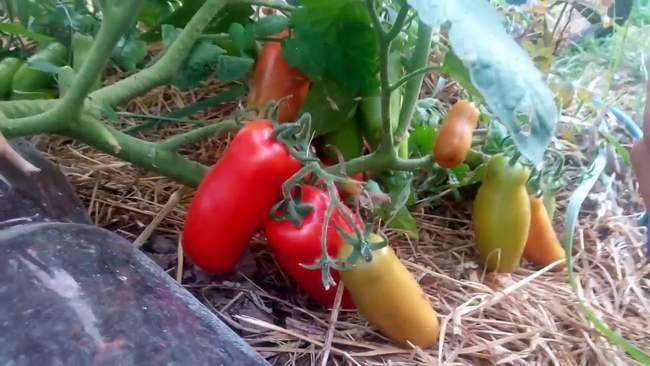
Tomato is a determinant standard variety, in other words, it can be grown both in greenhouse conditions and in an open garden area, it stops growing itself, branches weakly - it comes out with a growth of up to 40-47 cm.If you like undersized standard tomato varieties, then the variety Visibly-Invisibly will also be to your taste.
Standard varieties have a rather weak root system, so they can be planted tightly to get a larger yield from a smaller planting area.
Let's talk about the advantages of this tomato variety:
- High productivity. It can be safely argued that it is almost twice as much per bush as compared to some other varieties.
- Simultaneous harvesting, since in the brush all fruits ripen at the same time.
- Growing both in the greenhouse and in the open field.
- Unpretentious care, bushes do not require pinching.
- Saves the area of the site.
We also note the disadvantages of the gigolo variety:
- Susceptibility to diseases (late blight of nightshade).
- Many people note the dense skin of the fruit and "insufficiently pronounced tomato sugar".
"Zhigalo" are tomatoes intended for raw food and canning. In addition, it is very convenient to stuff them, since they resemble sausages in shape - they are elongated with a rounded end, there is not much pulp inside, which makes it easy to place the filling in them.
Another advantage of this variety, which was bred thanks to Biotekhnika, is that its yield is very high. From one bush, you can collect 2 times more fruits than from other varieties of tomatoes.
The variety itself is mid-season, from the moment of germination to the ripening of the fruits, it will take about 99-105 days.


It can be grown without much care both in greenhouses and in open areas of the garden. It does not require special care, watering, loosening and feeding is all that it needs for growth.
Characteristics
This plant is determinate, miniature shrub, standard, maximum 50 cm high. No garters or formations are required. On one brush of such a bush, 4-6 small tomatoes can be located.
- The shape of the fruit is elongated in length;
- The weight is small - 100-130 grams, they are taken not in size, but in quantity;
- The color is red, but not very bright;
- There are practically no seeds in such fruits;
- The pulp is juicy, fleshy;
- The taste is sweet, but not sugary.
Other table varieties of tomato presented on our website: Lapwing, Fat boatswain, Goldfish, Domes of Russia, Pride of Siberia, Ogorodnik, Alpha, Bendrik's Cream, Raspberry Miracle, Heavyweight of Siberia.
The Zhigalo tomato variety was obtained in 2020 by breeders.
Similar varieties
Zhigalo tomatoes are often confused with other similar varieties. The closest analogs of tomato include:
- Casanova. Mid-season tomato, sown in March, and ripe fruits are harvested after 100 days. The bushes are high, stretching up to 2 meters, which indicates the indeterminacy of the variety. They are formed into two trunks, with proper agricultural technology, you can get 10-12 kg of tomatoes per sq. The fruits themselves are bright red, elongated, at the end there is a slight bifurcation due to which outwardly they resemble a man's penis. The mass of one tomato reaches up to 200 grams. The variety is prone to late blight, apical rot and fusarium wilt.
- Auria. Indeterminate branchy plant, about 1.8 - 2 meters high. Productivity depends on care. With the management of a bush in two stems and the regular removal of stepchildren, it is 15 kg per sq. Fruits ripen 105 days after seedling formation. The vegetable itself is elongated, about 15 cm, there are tubercles on the surface. The color of ripe fruits is red, the weight of one tomato is about 150 grams. When transplanting into soil, the pH of the soil is important, increased acidity leads to the development of top rot.
- Fun. Refers to indeterminants, the trunk stretches up to 1.5 - 2 meters, then the growth stops. Fruit ripeness occurs 110 days after the emergence of seedlings. Tomatoes are very elongated, have a bright red skin and the same color flesh. The weight of tomatoes is 100-130 grams. Productivity is good, 13-15 kg per sq.m. It is characterized by natural resistance to the pathologies of nightshades, however, with a lack of calcium, it can get sick with apical rot.
- Eros. The height of the bush reaches 1.8 meters, it belongs to the indeterminate varieties. The tomato is mid-season, ripening occurs 110-115 days after the formation of seedlings. The tomatoes are elongated, dense, orange in color. Outwardly they resemble pepper. Fruit weight 150-180 grams. High-yielding, with a three-stem plant, you can harvest 10 kg of tomatoes per sq. M. It resists nightshade diseases well.
Bush care
How to properly care for tomato bushes:
- Throughout the growing season, the tomato needs high-quality, abundant watering. To do this, use warm, settled water from a barrel. Watering is carried out at the root, without falling on the foliage;
- To increase the yield, phosphorus and potash fertilizers are applied in a timely manner. As soon as the culture begins to bloom, the application of nitrogen-containing fertilizers is limited;
- After each watering and precipitation, the soil must be loosened to avoid the formation of a dry crust, which prevents free air exchange, which is important for the development of the root system;
- Weeds are removed in a timely manner, since it takes away the nutrients necessary for the development of cultivated plants;
- To keep the soil moist, mulch it using cut grass or straw;
- Spraying is carried out at the beginning of the flowering of the first cluster, as well as as soon as the ripening of the first fruits begins. Thus, you can get high-quality tomato fruits;
- To increase the ovaries of fruits, plantings are sprayed with a solution of boric acid, at the rate of 1 gram per liter of water.
Spraying is carried out at the beginning of the flowering of the first brush, as well as as soon as the ripening of the first fruits begins.
3-4 days after thinning the seedlings, you can carry out the first feeding of Zhigalo tomatoes. A suitable fertilization option is ammonium nitrate solution (15 g per 10 liters of water). It is advisable to pour a liter of solution under each bush. After fertilizing, it is recommended to mulch the soil.
As soon as the fruits begin to set on the bushes, the second feeding of the Zhigalo tomatoes is carried out. A mineral mixture is used as a fertilizer (there are 20 g of superphosphate and 10 g of potassium chloride per square meter). Fertilizers are buried in moist soil. To do this, shallow grooves (4-6 cm) are made along the rows of bushes at a distance of 17-20 cm from the plants.
When fertilizing the soil, it is recommended to carefully apply nitrogen fertilizers. Excessive use of them leads to increased growth of the bush and an abundant build-up of green mass.
If there are no ready-made mineral fertilizers, then it is quite possible to use organic fertilizers. To prepare the mullein solution, use a bucket of manure and 10 buckets of water. Tomatoes are fertilized with an infused (10-12 days) solution. Moreover, a liter of infusion is still pre-diluted with ten liters of water. Feeding rule: a liter of diluted infusion is poured under each bush.
The standard grade Zhigalo does not create problems with pinching. Therefore, there are no difficulties with caring for the bush and its formation.
How to plant seedlings
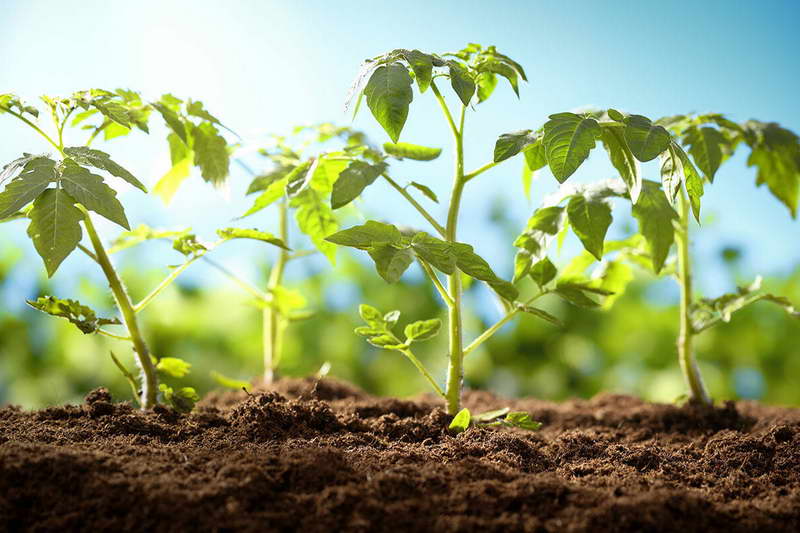

How to plant Gigolo tomato seedlings in the ground photo
- It is better to plant plants one at a time.
- Given the small growth and standard shape of the bush, the distance between the bushes can be reduced to 30-40 cm (plant better in two lines, so space in the garden is used more economically), the distance between the rows (or double lines) is 50-70 cm.
- It is advisable to make holes in advance, pour a little humus or compost, and water to plant seedlings in the mud. This will be much better for the roots, which are less injured when planting.
- Plant the seedlings, deepening the trunk a little, and the overgrown can even be tilted.
- After planting, water again, but a little.
Tomatoes respond very positively to mulching. If possible, cover the ground with mowed grass or straw, this procedure will save the ground from overheating and drying out quickly. There will be less weeds and less watering.
Advantages and disadvantages
The Zhigalo tomato variety has a number of advantages:
- Abundant fruiting;
- Unpretentious care;
- High yield;
- Due to the compactness of the bush, there is a significant saving in the area of the site;
- The versatility of cultivation (open and closed ground);
- No need for pinching and tying.
- Excellent taste characteristics.
The disadvantages of the variety include:
- Average susceptibility to diseases typical of nightshades;
- The presence of a dense rind, which is noticeable when fresh tomatoes are eaten.
The Zhigalo variety has a number of advantages over other varieties of tomatoes:
- a large number of fruits (the yield from one bush is twice as high as that of other varieties;
- bushes do not need to be pinned;
- these tomatoes can be grown both in the greenhouse and in the open field;
- the plant is not capricious and unpretentious in care;
- the area of the site is used sparingly.
However, the Zhigalo variety, like all other varieties, is not without its drawbacks.
Due to the fact that the variety is not a hybrid, it does not have innate immunity against diseases that are susceptible to crops of the Solanaceae family. To prevent the plant from getting sick, you need to take a number of preventive measures. And again, garlic infusion can help out. Take 1.5 cups of chopped garlic cloves and shoots and one and a half grams of potassium permanganate.
Another option is to use wood ash. Take half a bucket of ash and 10 liters of water.Mix and infuse for three days, stirring occasionally. Leave to stand. Bring the finished product to a volume of 30 liters, add 30-35 g of laundry or liquid soap. Tomatoes are sprayed with the product 3 times per season: when the seedlings have taken root, before the flowering process and after the appearance of the ovaries.
Late blight (fungal disease) can infect plants and fruits. Too high humidity and low temperature are the main conditions contributing to the development of this disease. Therefore, at the time of deterioration of weather conditions, it is necessary to process plants. The best for this is the so-called Bordeaux liquid or fungicides. You can buy them in special stores.
To prevent the spread of bacteria, it is necessary to remove old yellowed foliage.
Some consider too thick skin to be among the disadvantages. This is most noticeable when eaten raw.
Tomato "Gigolo", which summer residents learned about thanks to, cannot be called an ideal crop in your garden, but it still has some advantages over other varieties.
For example, such tomatoes are great for preservation as a whole; a lot of fruits can be harvested from one bush at the same time, and they do not crack and have good resistance to such an unpleasant late blight.
As for the shortcomings of the described variety, here many people note a not so bright taste and dense peel, because of which, for fresh consumption and making salads, you want to find other options for tomatoes.
Did you know? The first mention of tomatoes in European history dates back to 1555, when the Italians described them, calling the fruit "pomi doro".
Pros:
- productivity;
- marketable condition;
- good preservation;
- ease of cultivation;
- amicable maturation with brushes;
- endurance of heat and sudden cold snaps;
- resistance to fungal and viral pathogens.
Minuses:
- the need for dressing and tying.
Seed sowing dates
Seed material is purchased in the store, and the name of the tomato on the package is found in two versions - "Zhigalo" or "Zhigolo". To get a productive crop, it is necessary to observe the sowing time.
For sending seedlings to the ground, it is important that the weather is stable, without frost. Focusing on climatic conditions, they indicate the approximate date of moving young plants to the garden. The seeds are planted exactly 60 days before the due date.
For open ground, sowing is carried out 7-10 days later than for closed ground.
In the southern regions they sow in late February and early March, in mid-latitudes - in mid-March, in the north - in the second half of March.
Diseases and pests
The Zhigalo tomato variety cannot boast of a special immunity to disease. However, timely prevention helps prevent infection.
Late blight is a fungal disease that affects not only the plant, but also the fruits. It is known that low temperatures and high humidity are favorable conditions for the spread of the disease. Therefore, when weather conditions worsen, it is recommended to spray tomatoes with Bordeaux liquid, fungicides (Ridomil Gold, Quadris).
As regular preventive measures, it is recommended to mulch the soil, timely remove old and yellowed leaves.
The cultivation of the standard variety Zhigalo is suitable for novice gardeners and summer residents who do not burn with the cultivation of exquisite and rare tomatoes.
Despite the lack of good immunity, unlike hybrids, the Zhigalo tomato is practically not susceptible to them. Therefore, as a preventive measure, tomato seedlings are treated with fungicidal preparations. Also, the plantings are regularly inspected for the presence of Colorado beetles. Adult plants are more resistant to diseases, but there is a risk of late blight. However, with sufficient care and control, disease can be avoided.
Regarding pests, Gigolo tomatoes, like all nightshade crops, are attacked by Colorado beetles. Pest control is expressed in the collection of beetles and their larvae.
When growing tomatoes in a greenhouse, regularly ventilate and monitor humidity to avoid aphids.
Unfortunately, this variety cannot be marked with a chic immunity to diseases, although it rarely gets sick. Disease prevention measures are very important, because the fight against disease is expressed in the destruction of bushes.
This tomato variety is especially susceptible to fungal disease - late blight. And since for the development of this disease, a decrease in temperature with high humidity is favorable, the following should be done during the period of cold days with prolonged rains:
- Spray the bushes with Bordeaux mixture;
- Spray the bushes with fungicides;
- Fight thickening bushes.
Folk remedies for combating fungal diseases: spray with fermented milk liquid products.
Also important measures for the prevention of diseases are:
- Mulching the soil.
- Breaking off yellow leaves.
Reviews of gardeners who planted Zhigalo
Many gardeners have already managed to plant the original variety on their site. Most of them willingly share their results of growing Zhigalo on the Internet. On horticultural forums, the novelty is actively discussed, gardeners from different regions of the country leave their comments.
“Zhigalo is one of the most productive varieties that I grow. In the open field, the fruits are slightly smaller and drier than in the greenhouse. The bushes look very beautiful - like Christmas trees. The leaves are tightly packed to each other. In salting, they are just excellent. I think that the drier ones I use for drying. I will definitely grow more "
“After 2 years of cultivation, Zhigalo has definitely become my favorite: great yield and beautiful appearance of the bushes. I put 4 for the taste (still rather dry), but the pulp is fleshy, in principle, tasty. Because of the phytophthora that started in the greenhouse, the fruits had to be removed green, but they ripened well, this had absolutely no effect on the varietal characteristics "
“It is a little embarrassing that the same seed producer cannot decide on the correct variety name. On some packs it is written Gigolo through "O", on others - Gigolo, through "A". It's strange somehow “
“I always treat Zhigalo as a preventive measure. Most often I use milk with iodine, milk whey and other improvised means. Although my neighbors on the site also grow this variety and say that they do not spray it with anything at all, and the bushes are healthy. I still prefer to play it safe "
Vladimir, 54 years old, Belgorod:
“I have been fond of growing standard tomatoes for a long time. Moreover, I grow them wherever I can - on the balcony, in the country house in the beds of open ground, in the greenhouse. I came across a description of the Gigolo on the Internet and decided to try it. A very interesting variety: the fruits are so original, the bushes are beautiful, very fruitful, in principle, like all standard ones "
Alexandra S., 34 years old, Kurgan:
“Some people leave comments that the Gigolo is similar to the Auria variety. Maybe only in the shape of the fruits themselves, otherwise they vary greatly. For example, Auria is grown mainly in greenhouses, the bush is a liana with unlimited growth. My gigolo has grown 45 cm in the open field, I don't think that the height in the greenhouse will increase by more than 20 cm.I didn’t pinch the gigolo, and Auria constantly gives her stepsons, if you start it, then you will not be able to get into the greenhouse at all.
In general, I independently compared these two varieties for myself and decided that I would give my preference to the Gigolo - it is not so whimsical and suitable for planting on the beds. I will leave the place in the greenhouse for other varieties, with a different form of fruit "
“I planted a Gigolo - and was not disappointed. Super grade. The yield is simply amazing, my wife and I simply did not have time to make preparations.We shared the harvest with friends, neighbors in the area, they took seeds from the tomatoes, they will also grow next year. Next year I will put the Gigolo in open ground, see how they will bear fruit. In the greenhouse, at the end of the season, we had to pluck green tomatoes and ripen - late blight appeared, as usual “
Anastasia Morozova, 31 years old, Oryol:
“I grow tomatoes in a greenhouse, there was also a place for Gigolo there. I was pleased with the compactness of the bushes, next year I will plant them a little closer to each other, I stocked up on seeds. The only drawback for me is the need to tie the branches of the bushes, but otherwise the variety suits me completely. I like thick tomatoes, they don't fall apart when cut. "
Features of shape and size
Several decades ago, tomatoes had only a rounded shape. The only exception was the Cream variety. Now breeders are actively working on the creation of new species, so it can be quite difficult for consumers to decide on the choice of seeds for planting.
The Gigalo tomato is characterized by a very unusual shape. Outwardly, it resembles a cylinder. Inside the tomato there is a loose pulp. By the way, that is why this variety is often used for stuffing. A lot of filling is placed in a tomato, and removing the pulp is not difficult.
The weight of such a tomato is no more than 130 g. These sizes are ideal for canning for the winter. This variety is actively used by chefs in restaurants for preparing salads and presenting dishes, because its shape is really unusual.
Reviews of gardeners
Those who have ever planted Zhigalo tomatoes were pleased with it. The tomato has positive ratings and recommendations for growing.
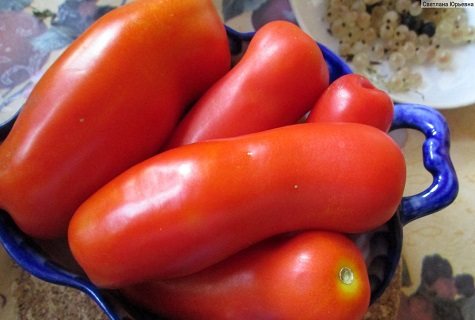

Lydia: I planted this variety twice. I like them very much, it is convenient to cut them into a salad, stuff them. Adjika of them is not watery, thick. The bushes did not hurt. The yield is abundant. Unusual shape. Even children like it. I recommend this variety for those with small greenhouses.
Gigalo is a tomato chosen by lovers of unusual varieties. In order for the harvest to be larger, it is necessary to constantly pay attention to the culture, to follow all the rules of care. Then the tomatoes will delight you with delicious juicy fruits. Successful landings!
Growing tomatoes or cultivating cultivars
If you have grown Gigolo tomatoes, please write whether you like them or not. What was the yield and taste of the fruit in your climatic conditions? What is the average weight of the fetus? Describe briefly what advantages and disadvantages this tomato has in your opinion. If possible, attach a photo of the entire bush as a whole or individual fruits grown by you to the comment. Thank you!
Your reviews about the Gigolo tomato and additions to the description will help many gardeners evaluate this variety objectively and decide whether to plant it or not.
You can see other interesting varieties and hybrids of tomatoes with photos, descriptions and reviews in our
Tomato catalog
... Happy viewing.
The most common cultivation method for Gigalo tomatoes is seedling.
Description:
- If there is no mark on the package about the factory processing of seeds, it is imperative that the planting material be independently processed from diseases. To carry out the disinfection procedure, use a choice of: manganese solution, aloe juice, "Fitosporin" solution;
- After the disinfected seed material must be washed in clean water and processed in growth stimulants - HB, Epin, Novosil, or in a honey solution.
Description:
- Sowing of planting material is started 55-60 days before the expected date of transplantation to a permanent place;
- For growing seedlings, special containers are used, having previously disinfected them;
- The preparation of fertile soil is carried out in advance. Optimally - purchase a special soil mixture for tomato crops in specialized stores;
- The substrate in the containers is loosened and moistened.Seed material is sown into shallow grooves, deepening by 1.0-1.5 cm. After that, it is sprinkled with a 1.5 cm layer of soil and the containers are tightly closed with foil. The containers are transferred to a room with a temperature regime of at least 21 degrees;
- Watering is carried out in moderation, preventing the soil mixture from drying out;
- After the appearance of the first shoots, the film is removed and the temperature regime is reduced for several days;
- As soon as two full-fledged leaves are formed, the seedlings are transplanted into separate containers. The first feeding is also carried out.
7-10 days before transplanting to a permanent place, tomato bushes begin to harden, gradually lowering the temperature regime by 5-7 degrees.
Description:
- Seedlings are transplanted to a permanent place after the threat of recurrent night frosts has passed and the soil warms up to 15 ... 18 degrees;
- For growing tomato crops, fertile areas with loose soil are used;
- Since the standard varieties are distinguished by an underdeveloped root system, this allows for a denser planting of tomatoes and a good harvest on a limited area. Planting is carried out according to the standard scheme of 50x40 cm, that is, no more than 4-5 tomato seedlings are planted per 1 m2.
Planting and care rules
There are no special secrets for growing the Gigalo variety. When growing tomatoes, seedling and seedling methods are used.
Growing seedlings
- To obtain sprouts, seeds are planted in special containers. It is better to prepare fertile soil in advance. An excellent option is to buy a ready-made potting soil mixture for tomato seedlings in a specialized store.
- In order to further protect the plants from diseases, it is advisable to pre-treat the seeds: it is enough to hold them in a 1% solution of potassium permanganate for twenty minutes. Then they are washed in clean water.
- The soil in the box is loosened and moistened. The seeds of Zhigalo are laid out in specially prepared shallow grooves and sprinkled with earth (approximately half a centimeter layer). The containers are tightly covered with foil and placed in a warm place with an air temperature of at least 21˚ C.
- As soon as the first shoots with leaves appear, it becomes possible to plant the seedlings in separate cups. In the future, the seedlings are slightly hardened before planting in open ground - the air temperature is lowered by 5-7 ˚ С.
In a greenhouse or open ground, seedlings can be planted as soon as warm weather sets in, excluding unexpected frosts.
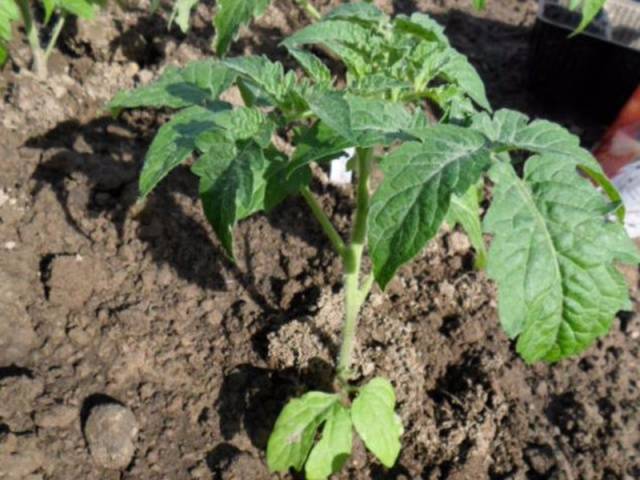

Planting seeds in open ground
With this technology of growing tomatoes, seed germination is first carried out. Thus, you can achieve earlier germination of seedlings of tomatoes of the Zhigalo variety. To germinate seeds, they are placed in a linen bag and dipped in warm water for about 12 hours. To keep the seeds cool, the water is periodically changed. Germinated seeds are buried in two pieces in holes dug in a specially prepared area.
It is possible to plant seedlings according to two schemes: linear and checkerboard.
- With the linear method, the distance between the bushes in a row is 25-30 cm, and a distance of 60-70 cm is kept between two rows.
- With the checkerboard method, the distance in a row between the bushes is 50-55 cm, between the rows - 70-75 cm (as in the photo).
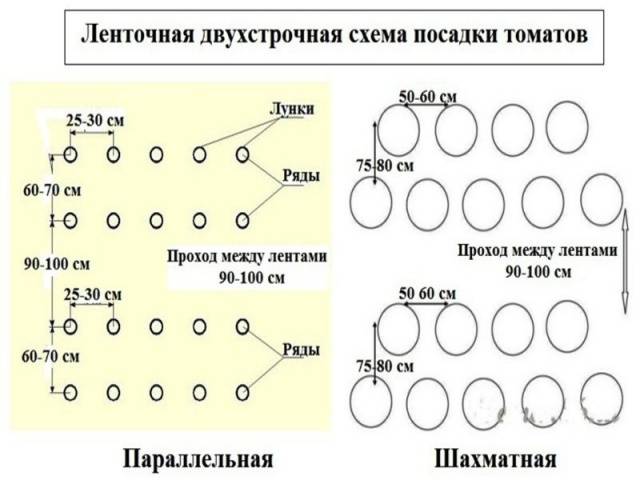

As soon as the seeds germinate and two leaves appear on the seedlings, the seedlings are thinned out - a stronger plant is left in the hole, and the weak sprout is not pulled out, but cut off so as not to damage the neighbor.
Important! When planting tomatoes of the Zhigalo variety according to any scheme, the distance between the beds remains within 90-100 cm.
Tying tomatoes
Since the Zhigalo variety is undersized, there is an opinion that it is not required to tie it up. It is believed that a tomato has a strong stem and a developed root system already in the process of sprout formation.However, when a large number of fruits ripen, the Zhigalo bush can break / fall down with strong gusts of winds. Therefore, it is advisable to provide each bush with a support even during the preparation of the beds and holes.
Advice! In regions with a cool climate, the garter must be carried out in order to prevent plant diseases so that the fruits do not fall to the ground.
In warm areas, you can do without supports. Zhigalo bushes will be laid on the ground, protecting the soil from drying out. It is advisable only to pre-mulch the soil.
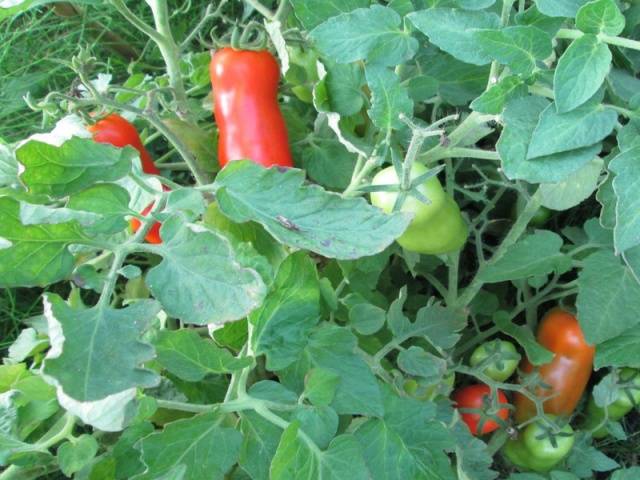

Watering tomatoes
The Zhigalo tomato variety does not need close attention and care. Since the root system of the plant is located close to the surface of the soil, it is necessary to beware of excessive moisture in the soil. It is worth navigating by the soil - when it dries, water it.
A warning! It is recommended to avoid getting water on the stems and stem of the plant.
After watering, the soil must be loosened to ensure good air exchange.
More about tomato
Description and characteristics of tomatoes can help you learn the rules for caring for them.
This variety was developed by breeders. The bush is small, it does not need to be tied up, pinned. The foliage is moderate, the inflorescences are simple. Fruit ripening usually takes place three months after germination.
There are a lot of fruits on the bush, they hang like a toy on a Christmas tree, they hang on brushes of 6-7 pieces. The shape of these fruits is very unusual. Elongated, rectangular with a rounded base. They look like peppers. Color from orange to red. Length up to 12 centimeters, weight up to 150 grams. The pulp is firm, the taste is sweet, but the acid is also present.
It is good to prepare salads from this tomato, as well as various preparations for the winter: pasta, adjika, pickle, salt. It will be delicious to make dried or sun-dried tomatoes from them. They look very nice in banks. They can be harvested unripe and stored until reddening. But, ripening on a branch, the taste will seem brighter.
During ripening, the harvest takes place at the same time. This variety is good for sale and has a good attitude towards transportation, as their skin is dense and thick. Does not crack.
This variety was developed by breeders. The bush is small, it does not need to be tied up, pinned. The foliage is moderate, the inflorescences are simple. Fruit ripening usually takes place three months after germination.
There are a lot of fruits on the bush, they hang like a toy on a Christmas tree, they hang on brushes of 6-7 pieces. The shape of these fruits is very unusual. Elongated, rectangular with a rounded base. They look like peppers. Color from orange to red. Length up to 12 centimeters, weight up to 150 grams. The pulp is firm, the taste is sweet, but the acid is also present.
It is good to prepare salads from this tomato, as well as various preparations for the winter: pasta, adjika, pickle, salt. It will be delicious to make dried or sun-dried tomatoes from them. They look very nice in banks. They can be harvested unripe and stored until reddening. But, ripening on a branch, the taste will seem brighter.
During ripening, the harvest takes place at the same time. This variety is good for sale and has a good attitude towards transportation, as their skin is dense and thick. Does not crack.
Growing features
The cultivation of these tomatoes is carried out in seedlings from germinated seeds. They begin to be planted in March. After sowing, you need to cover with foil and monitor the temperature, it should not be lower than 18 degrees. Before planting, you can soak the seeds in a special solution that will protect future plantings from diseases and help germinate faster.
See also
Description of the tomato variety Elf f1, features of cultivation and careRead
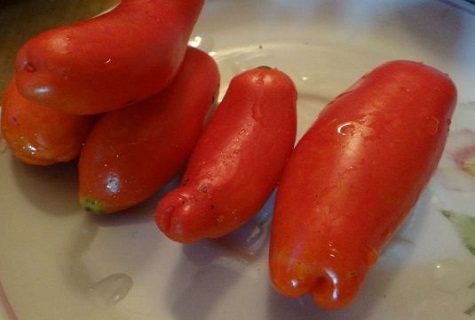

It is important to provide a sufficient amount of light to the scions. After several leaves appear on them, they can be seated from each other.
Plant only mature seedlings with a dense core and hardened in the garden. This is usually done in May.The soil for plants is prepared in autumn and spring. It should be soft, light, rich in fertilizers. For these tomatoes, it is important that there are top dressing in the form of potassium, magnesium, phosphorus, copper, manure, chicken droppings, humus. All this allows you to grow juicy healthy fruits.
Usually three months pass from sowing seeds to the beginning of fruiting. In this regard, the variety can be considered mid-season. All this time, attention from gardeners and high-quality care is important for tomatoes.
Planting seedlings to a permanent place
Seedlings are planted in open ground when they grow up to 20 cm. At the same time, the root system is already developed, and the plants have a better chance of surviving. Disembarkation dates depend on the region, but not earlier than mid-May. You can also plant it in the greenhouse in the first few days.
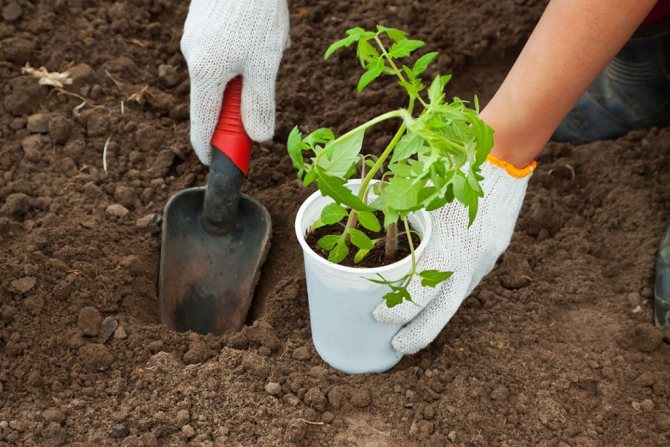

When planting bushes, you need to leave at least 50 cm between them. This will allow you to easily care for the grown plants. In case of late blight, diseased tomatoes should not touch healthy ones.
Hardening
Hardening of seedlings begins 2 weeks after germination. To do this, it is taken out to the balcony at + 15 ° C and kept for half an hour, then the same is repeated at + 10 ° C. But it is easier to do this 14 days before the intended planting in open ground. Plants are taken out in the evenings on the street or balcony, left there for an hour.
A week later, they take it out in the morning and leave it in the shade all day. You need to accustom you to direct rays in stages: leave for 30 minutes in partial shade, and every day the duration of solar procedures is increased.


